Seabird Protection Network 
Point Sur – Point Mugu Chapter
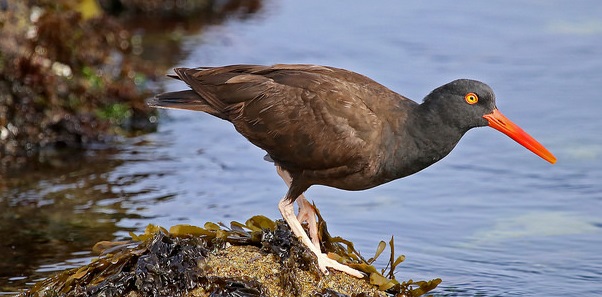
Meet the VIPs (Very Important Populations)
Welcome! Please meet the "VIPs" (Very Important Populations) of the Seabird Protection Network - Pt. Sur to Pt. Mugu
Black Oystercatcher
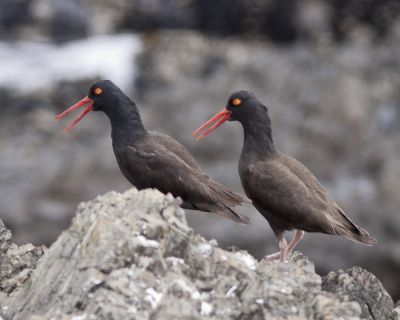
Habitat: High tide zone of near and offshore rocks; protected mainland rocky intertidal areas.
Profession: Prying small mollusks off the rocks and expertly opening them with their chisel-like bills.
Wow Fact: Although they do not swim, chicks will sometimes dive under water to avoid predators. A group of oystercatchers are collectively known as a "parcel" of oystercatchers.
Brandt's Cormorant
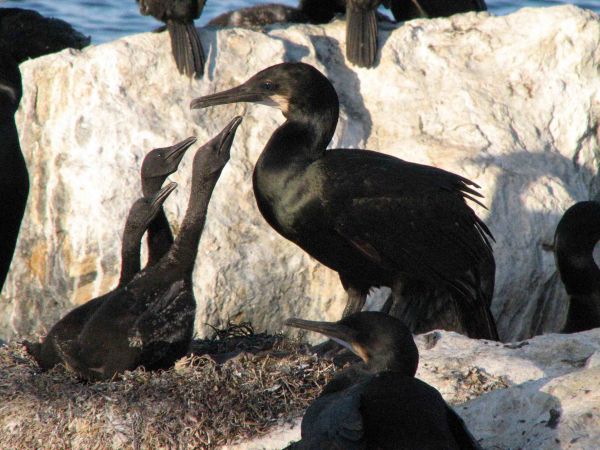
Habitat: Steep cliffs of rocky islets; islands near and offshore.
Profession: A fish-hunter, it propels itself with large, webbed feet.
Wow Fact: Unlike many other cormorants, these sleek seabirds flock together to communally hunt schools of fish. They can be seen in flocks of several hundred flying in long, straggling lines.
Brown Pelican
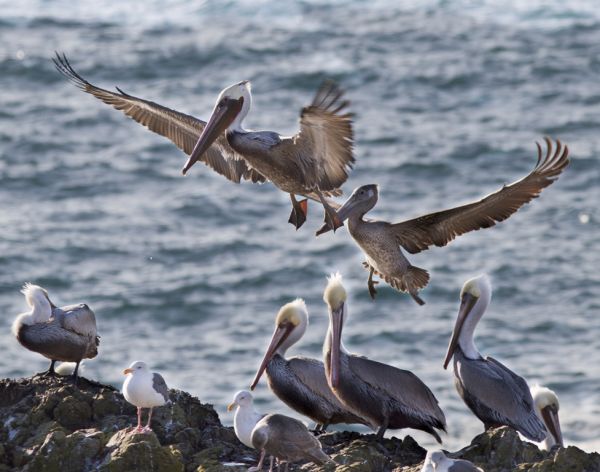
Habitat: Rocky cliffs near and offshore; sandy coastal beaches and lagoons; waterfronts and pilings.
Profession: A fish-hunter that works collectively in groups flying single-file over the water, plunging from heights of 50' to catch fish in a large, specialized beak-pouch from which it strains the water after surfacing and swallows the fish.
Wow Fact: To keep eggs warm during incubation they stand on top of them.
Pelagic Cormorant
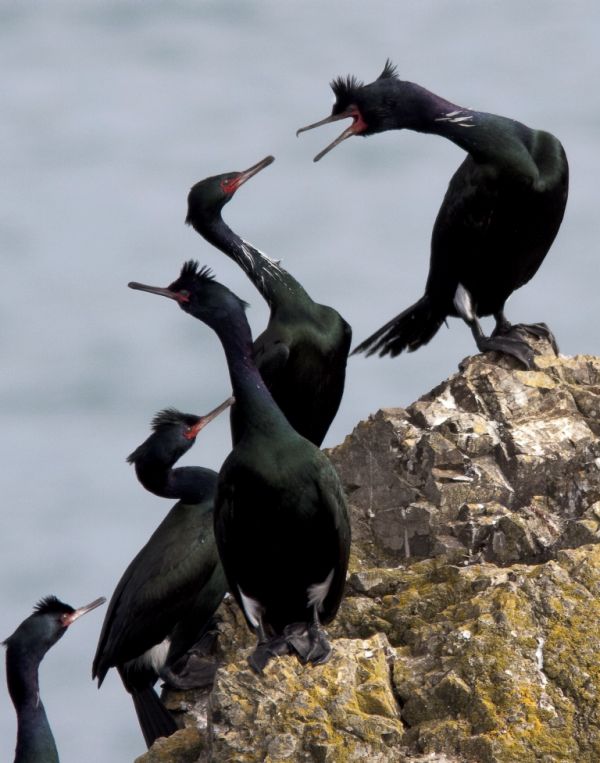
Habitat: Rocky coasts of islands, islets, and the mainland.
Profession: A fish-hunter that hunts close to shore and far out at sea; also preys on crabs and other crustaceans.
Wow Fact: Being the smallest of the Pacific cormorants, Pelagic Cormorants can spring directly from the water rather than having to paddle along the surface like the other species. They make their nests from seaweed, feathers, and other debris. They have been documented diving to depths of 180' (55m).
Pigeon Guillemot
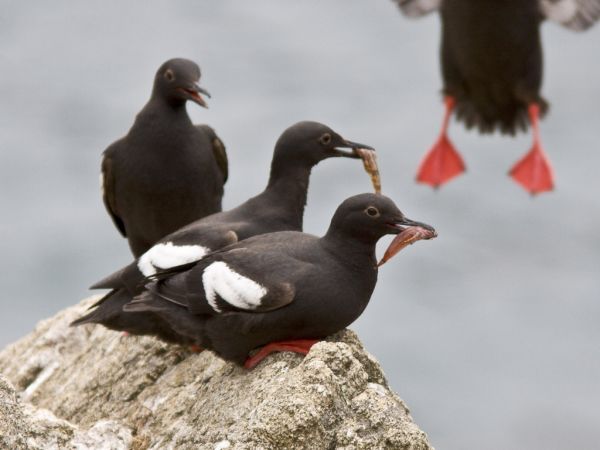
Habitat: Rocky coasts of islands, islets, and the mainland.
Profession: A fish-hunter, its powerful wings allow it to "fly" under water in pursuit of its prey.
Wow Fact: They can scale vertical rock cliff faces by vigorously flapping their wings and using the sharp claws of their webbed feet.
Western Gull
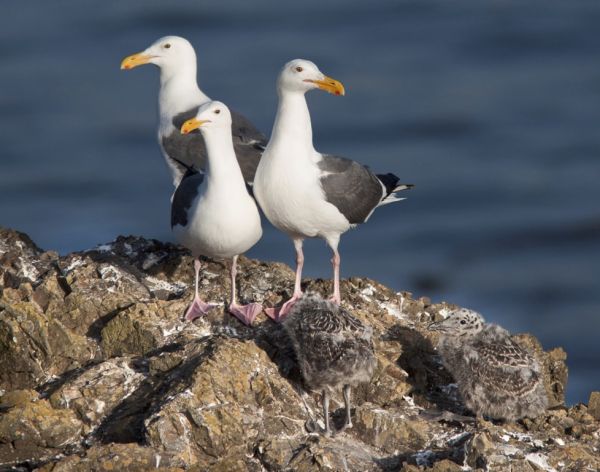
Habitat: Rocky coasts of islands, islets, and the mainland.
Profession: An opportunist - this large gull will eat just about anything.
Wow Fact: To protect its eggs and chicks, they release a hot dose of guano onto potential predators - including humans - from above.
